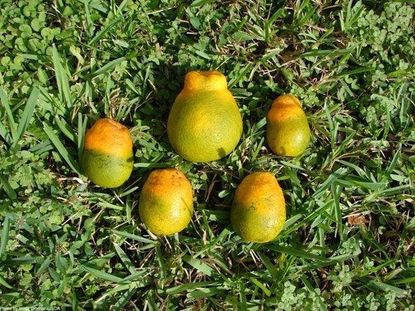What Is Citrus Greening Disease: Saving Plants Affected By Citrus Greening


An orange or lime tree can provide an amazing perfume for nights on the patio and fruits for drinks while entertaining, but if your tree was sick, would you know how to spot citrus greening disease symptoms? This disease is a serious problem across all citrus-producing states, causing infected citrus trees to develop symptoms mimicking nutritional deficiencies and inedible fruit that retains some of its green coloration.
What is Citrus Greening Disease?
Plants affected by the citrus greening disease, also known as huanglongbing or yellow dragon disease, have acquired a serious bacterial infection. Citrus greening disease symptoms vary widely but include new leaves that emerge small with yellow mottling or blotching, yellow shoots, enlarged and corky leaf veins, as well as fruits that are small with green ends and filled with small, dark, aborted seeds and bitter juice. This bacterium is transmitted by the Asian citrus psyllid, a tiny, wedge-shaped insect with brown and white mottled coloration. Although small, this pest has citrus growers across America fearful for the future of the entire industry. If you see it in your backyard citrus trees, you should capture the bug and call your local extension service right away.
Control of Citrus Greening
There is no cure for citrus greening, which explains why spotting citrus greening disease symptoms early is so crucial-- rapid removal of infected trees is the only way to stop the spread of the bacteria responsible. Since infected trees will never again produce useful fruits, they only serve as a reservoir for this economically dangerous disease. Plants affected by citrus greening include all the common citrus fruit trees, like oranges, limes, and lemons as well as ornamentals like orange jasmine, jackfruit, and limeberry. Orange jasmine has been implicated in Florida as a means of transportation between nurseries for Asian citrus psyllids, since it is a favorite of this pest. You may be able to prevent citrus greening by erecting a screen house around known, disease-free citrus trees, but psyllids are small, often no more than 1/8 inch (3 mm.) long, so your screen must be tightly woven. Insecticides can be highly toxic to the bees that pollinate citrus, but if you live in one of the many citrus greening quarantine zones, it may be useful to treat your citrus tree's leaves with chlorantraniliprole, spinetoram, dimethoate, or formetanate.
Gardening tips, videos, info and more delivered right to your inbox!
Sign up for the Gardening Know How newsletter today and receive a free download of our most popular eBook "How to Grow Delicious Tomatoes."

Kristi Waterworth was a regular contributor to Gardening Know How for many years, answering countless queries on plant pests and diseases.
-
 How To Get Rid Of Mosquitoes In The Garden: 9 Natural Ways To Make Them Buzz Off!
How To Get Rid Of Mosquitoes In The Garden: 9 Natural Ways To Make Them Buzz Off!How to get rid of mosquitoes is on the minds of people in the summer in almost every region of the world. Learn how to repel the pests without toxic chemicals.
By Mary Ellen Ellis
-
 Monkey Orchid Care: How To Grow This Fascinating Species
Monkey Orchid Care: How To Grow This Fascinating SpeciesThe monkey orchid (Dracula simia) bears a remarkable resemblance to its namesake and, with a little know-how, can be successfully grown as a houseplant.
By Bonnie L. Grant